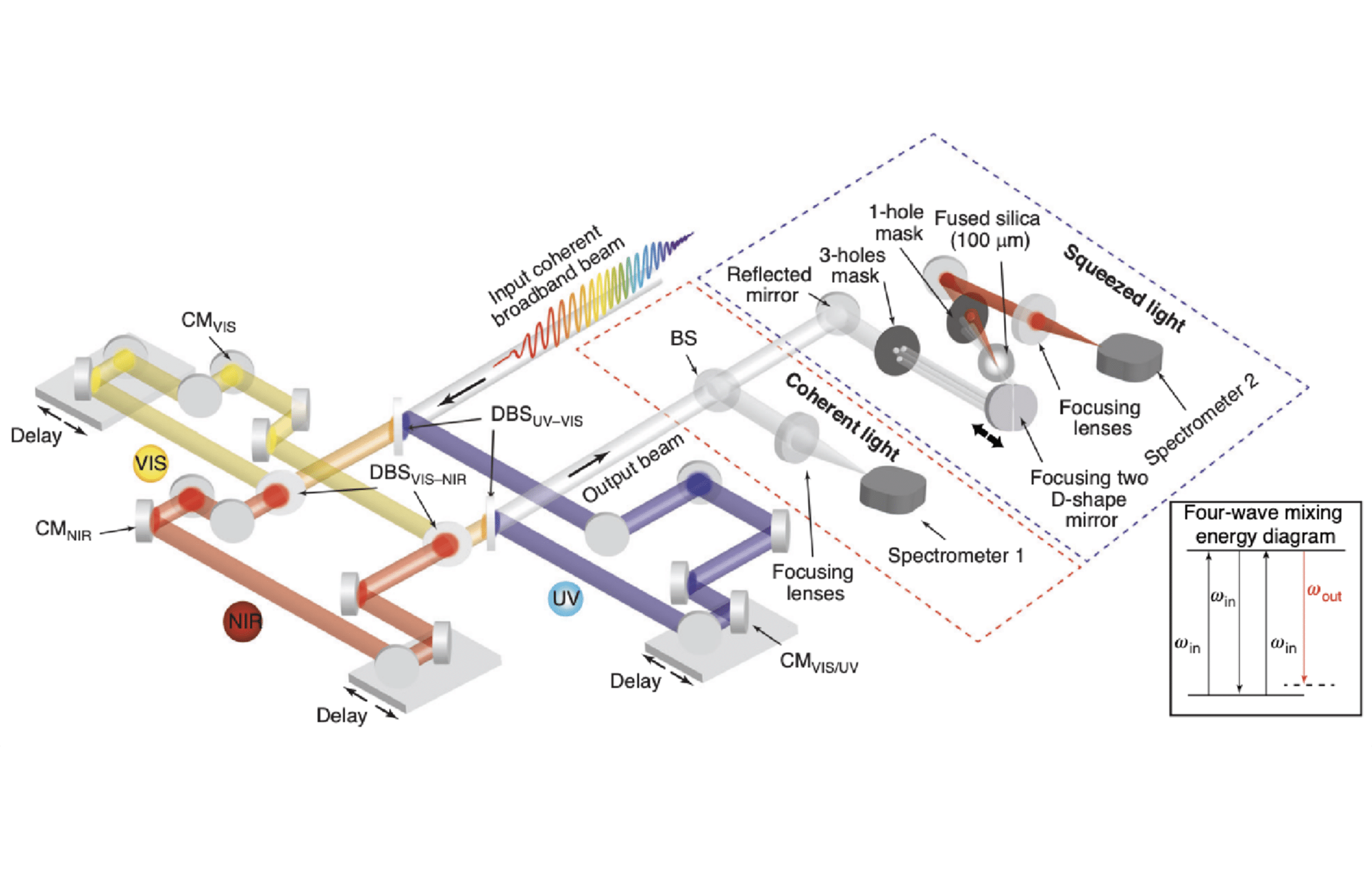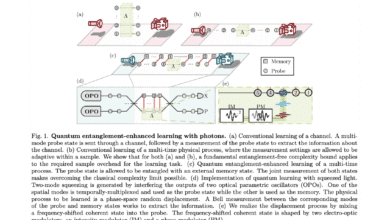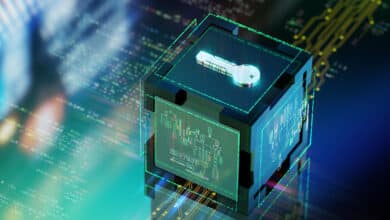Capturing Uncertainty

Table of Contents
4 Oct 2025 – A team of researchers led by Dr. Mohammed Th. Hassan at the University of Arizona has published a new paper titled “Attosecond quantum uncertainty dynamics and ultrafast squeezed light for quantum communication” (Sennary et al., 2025) in Light: Science & Applications.
This study reports the first-ever direct capture and control of quantum uncertainty in real time using ultrafast “squeezed” light pulses. In plain terms, the experiment achieves what was previously thought impossible – observing the famous Heisenberg uncertainty principle as it unfolds, at timescales of attoseconds (quintillionths of a second). The significance is enormous: by visualizing and tuning quantum fluctuations on-the-fly, the researchers open new frontiers in secure quantum communication and sensing. Nearly a century after Werner Heisenberg first described quantum uncertainty, this breakthrough provides a new perspective on that principle and “opens avenues for innovations in secure communication and quantum sensing”.
Why it matters: It’s the first demonstration of ultrafast squeezed light and real-time quantum uncertainty dynamics. This paves the way for ultrasecure quantum communication (harder to eavesdrop) and a new field of ultrafast quantum optics.
As a technology consultant with an eye on quantum innovations, I find this development both exciting and thought-provoking. In my view, this paper isn’t just another incremental physics result – it’s a signal of a paradigm shift in how we might harness quantum mechanics. Dr. Hassan himself called it “a paradigm shift in quantum optics” because it shows that uncertainty is not only measurable in real time, but also controllable. That’s a bold claim, so let’s unpack it.
What Did They Actually Do (In Plain English)?
In simple terms, the team found a way to “see” quantum uncertainty happening live. Quantum uncertainty refers to the fact that certain properties of a particle (like a photon of light) cannot both be known precisely at the same time. It’s like a game of whack-a-mole: measure one aspect more accurately, and you automatically disturb the other. Traditionally, this is illustrated by the famous analogy of the balloon – squeeze one side and the other side bulges. As Hassan explained, “Ordinary light is like a round balloon, with uncertainty spread evenly… Squeezed light… is stretched into an oval, where one property becomes quieter and more precise, while the other grows noisier”.
So, what the researchers did is generate “squeezed light” pulses that last only attoseconds (an attosecond is $$10^{-18}$$ seconds – incredibly, a second is 1018 attoseconds, meaning one attosecond is to a full second what a second is to about 30 billion years!) Squeezed light is a special quantum state of light where the uncertainty in one property (say, the light’s intensity) is reduced (squeezed) at the expense of increased uncertainty in the complementary property (like phase). Previously, scientists could produce squeezed light with relatively long pulses (nanoseconds to milliseconds) and use it for things like gravitational-wave detectors to cut noise. Hassan’s team pushed this into the ultrafast regime: femtosecond and attosecond pulses – that’s a million-billionth of a second scale – bringing quantum optics into the ultrafast laser domain.
How did they do this? They used a technique called four-wave mixing: essentially, they split a laser into three beams of different colors and focused them into a piece of fused silica (glass). When these ultrashort pulses interact, they create a new light pulse that is “squeezed”. Importantly, the team figured out a trick to switch the type of squeezing on the fly. By tiny mechanical adjustments (tilting the glass ever so slightly), they could toggle between squeezing the light’s intensity and squeezing its phase. This real-time control is a first – it means quantum uncertainty isn’t a static fuzziness, but something dynamic that they can tune like a dial. In effect, they made quantum uncertainty a knob you can turn, which is astonishing if you consider how fundamental and untouchable Heisenberg’s limit has always seemed.
To put it in a more visual analogy: It’s as if they built a super high-speed camera for the quantum world. Imagine trying to photograph a hummingbird’s wings in motion – too fast for a normal camera, it’s just a blur. What this team did is akin to getting a camera so fast (attosecond shutter speed) that you can see each tiny flutter and even influence how the wings move while watching. They’ve frozen and manipulated the “blur” that we once thought we could never eliminate in quantum measurements.
Why It Matters – Especially for Quantum Communication (and Maybe Computing)
Now, why is this a big deal beyond just satisfying physicists’ curiosity? Security and communication are front and center. In quantum communication (like quantum key distribution for encryption), one of the selling points is that any eavesdropper will disturb the system and get detected. This new research takes that idea to another level. By encoding data in these ultrafast squeezed light pulses, you’re essentially sending information with an extra cloak of quantum uncertainty that only the sender and receiver (who know the “key” and the exact form of the pulse) can properly decipher. An eavesdropper is in trouble:
- First, if they just try to intercept the quantum light, the system knows – like a burglar tripping an alarm. Traditionally, that alarm is part of quantum cryptography; the act of measurement by an eavesdropper introduces anomalies. But previously, a clever intruder with the right key might still glean some bits of information.
- With this new ultrafast squeezing scheme, however, the intruder faces multiple hurdles. As Hassan explains, the eavesdropper “must not only disturb the quantum state but also must know both the key and the exact pulse amplitude” to get anything useful. If they don’t match the precise conditions, their interference changes the squeeze (think of it like smudging that high-speed photo), and any data they try to decode comes out wrong. In short, this method “makes data interception more difficult for potential eavesdroppers” by adding a new layer of security at the physics level.
For a security-minded person, that’s huge. It’s reminiscent of having a lock that not only needs the right key, but also disintegrates the moment someone tries to pick it. The data stream becomes self-protecting to an extent – if you don’t handle it exactly right, it stops making sense. As one tech news outlet put it, this development could “revolutionize secure communication” by providing a more robust defense against cyber threats at the quantum level.
Beyond communications, the ability to orchestrate quantum uncertainty has implications for quantum computing and sensing. In quantum computing, noise and uncertainty are usually the enemy – they cause decoherence and errors. This research suggests uncertainty can be tamed or at least precisely controlled. That could mean new ways to stabilize qubits or to perform ultrafast operations with optical quantum bits. For example, if we can switch quantum states at petahertz frequencies (one quadrillion operations per second) as the paper demonstrates in principle, we might imagine future quantum processors using light pulses to compute at mind-boggling speeds. We’re not there yet, but the concept now looks a bit more feasible. At the very least, studying quantum systems at attosecond resolution might help engineers understand how quantum bits behave at ultrafast timescales, potentially revealing insights to mitigate errors in quantum logic gates.
And let’s not forget quantum sensing. The paper notes potential uses in chemistry, biology, and materials science. If you can measure quantum fluctuations in real time, you could detect extremely subtle phenomena – perhaps the tiniest vibrations of molecules or slight changes in electromagnetic fields. More precise diagnostics and new drug discovery methods have been mentioned as possibilities. These are forward-looking ideas, but not far-fetched: squeezed light was already used to enhance LIGO’s gravitational wave detection, and ultrafast optics have been used to watch electrons move in molecules. Marrying the two (ultrafast + quantum squeezing) could spawn sensors that achieve unprecedented sensitivity. I can imagine, for instance, a biochemical sensor that uses attosecond pulses to “feel out” molecular events that were previously too fast and too uncertain to measure. In an optimistic view, we might get medical imaging devices or environmental monitors that capture signals with quantum-enhanced clarity.
Practical Implications and Long-Term Potential
From a practical standpoint, one near-term implication is in the domain of secure communications infrastructure. We’re already seeing early quantum communication networks being tested (for transmitting encryption keys, for example). This new technique could be integrated into such networks to bolster security. It’s like adding an extra encryption layer, but rooted in physics. As a consultant, I’d advise organizations dealing with ultra-sensitive data (think government, finance, critical infrastructure) to keep an eye on this development. It’s early-stage, but it hints at future quantum-secure links that are virtually tap-proof. In a world where data breaches and cyber espionage are constant threats, the promise of communication channels secured by the laws of quantum physics is extremely attractive.
Another long-term potential is the creation of a new industry around ultrafast quantum optics. The researchers themselves describe their work as “opening the door to a new field: ultrafast quantum optics”. This means we might soon see more collaborations between laser physicists and quantum technologists. Companies that make ultrafast lasers or optical equipment might start adding quantum capabilities to their products. Conversely, quantum computing companies might begin exploring photonic architectures that leverage attosecond control. There could be spin-offs like specialized sensors for research labs or defense (imagine detecting tiny nuclear material signatures or cryptographic side-channels using such sensors).
Also, consider the broader innovation cycle: fundamental breakthroughs often lead to tools we didn’t anticipate. The attosecond “quantum camera” they’ve effectively demonstrated could become a standard instrument in labs, used to probe the quantum behaviour of new materials or to test quantum computer components. Just as the invention of femtosecond lasers led to techniques like frequency combs and revolutionized time-keeping and spectroscopy, attosecond squeezed-light tech might revolutionize how we measure time and quantum events at the smallest scales. Petahertz electronics (far beyond today’s gigahertz chips) might sound like science fiction, but this work is a step toward petahertz optoelectronics – devices that operate on optical cycles rather than electrical cycles. If that comes to fruition, the speed of information processing and data transmission could leap several orders of magnitude, reshaping computing and communications infrastructure in the coming decades.
Caveats, Challenges, and Open Questions
It’s important to temper our excitement with some pragmatic caveats. As with many cutting-edge lab demonstrations, there’s a long road from a controlled experiment to a real-world application. Here are a few things to keep in mind:
- Laboratory Setup vs. Real World: The experiment likely involves a sophisticated laser system, precise alignment of optical components, and perhaps vacuum chambers or cryogenics (common in quantum optics). Recreating attosecond squeezed pulses outside a lab – in a fiber optic cable across a city, for example – is not trivial. The current setup might be bulky and sensitive to vibrations or temperature. Engineering it into a robust device (let alone a chip-scale device) will take time. This is a known hurdle in photonics: lab demonstrations often need significant miniaturization and stabilization for commercial use.
- Distance and Decoherence: Sending quantum states over long distances (like between cities) is hard because the signal can degrade and the quantum effects can be lost (decoherence). Squeezed states are particularly delicate – even standard optical fiber can introduce noise. How far can an attosecond squeezed pulse travel and still be squeezed? That’s an open question. Techniques like quantum repeaters or special low-noise fibers might be needed, and those add complexity.
- Detection and Technology Integration: Capturing an attosecond-scale event requires equally fast detection electronics. Traditional detectors won’t cut it. The team used spectrometers and likely high-speed cameras to verify the squeezing. For practical systems, we’d need ultrafast optical detectors integrated into communication endpoints. This might spur development in that area, but it’s a dependency to watch.
- Scaling to Computing: While I speculated about quantum computing benefits, integrating this into quantum computers isn’t straightforward. Most current quantum computers are either superconducting (operating at microwave frequencies) or use longer laser pulses if photonic. Bridging the gap to petahertz optical control might require entirely new architectures. It’s a promising idea, but a lot of R&D stands in the way.
- Regulatory and Ethical Considerations: Here’s a broader point a risk-oriented consultant should raise. If we eventually achieve communication that is truly unbreakable due to quantum physics, that has societal implications. On the positive side, citizens and companies get privacy and security; on the flip side, law enforcement and cybersecurity agencies worry about “going dark” (not being able to monitor criminal communications). We saw this debate with strong encryption in messaging apps – quantum-secure communication could amplify it. It’s not a problem for today, but it’s worth thinking ahead. As one science article mused, such advances “raise critical questions” about how these technologies will be integrated and what ethical frameworks we’ll need. We should start discussing how to responsibly deploy ultra-secure communication channels in a way that balances security with other societal needs.
In summary, this research is a breathtaking demonstration of human ingenuity at the smallest and fastest scales. The team essentially tamed quantum uncertainty – a phrase I never expected to say – by using ultrafast pulses of light. For a technology geek like me, it’s like watching a magician reveal a secret that was locked away since the birth of quantum physics. But as with any emerging technology, we have to move from magic to engineering. The coming years will tell us how robust this technique is and whether it can be turned into practical tools.
Quantum Upside & Quantum Risk - Handled
My company - Applied Quantum - helps governments, enterprises, and investors prepare for both the upside and the risk of quantum technologies. We deliver concise board and investor briefings; demystify quantum computing, sensing, and communications; craft national and corporate strategies to capture advantage; and turn plans into delivery. We help you mitigate the cquantum risk by executing crypto‑inventory, crypto‑agility implementation, PQC migration, and broader defenses against the quantum threat. We run vendor due diligence, proof‑of‑value pilots, standards and policy alignment, workforce training, and procurement support, then oversee implementation across your organization. Contact me if you want help.



